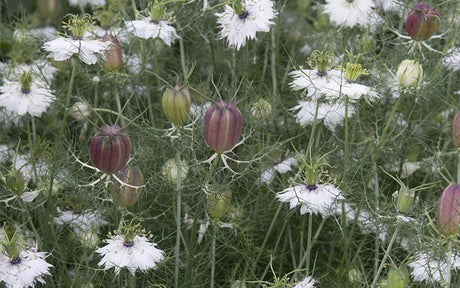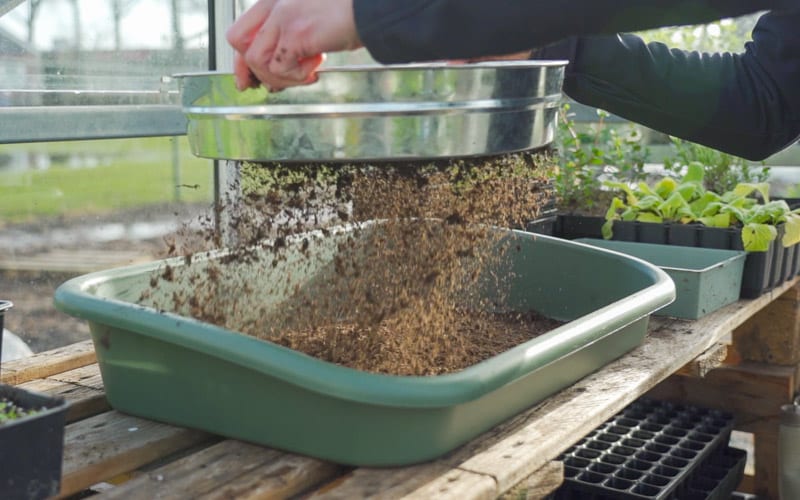
Plant Now for a Colorful Spring: Flowers to Sow in September
Looking ahead to a colorful garden next spring? Now’s the perfect time to start! While you might think September is the end of the planting season, it’s actually the start...
Discover the perfect start to your garden with our extensive selection of vegetable seeds. Whether you're a novice gardener or an experienced green thumb, our carefully curated seed categories offer everything from leafy greens to fruit vegetables. Our seeds are sourced to ensure the best growth in European climates, providing you with robust plants that thrive in your garden conditions.
Choosing the right seeds depends on several factors:
The best planting time varies by the type of vegetable and your local climate:
Sowing depth is crucial for good germination. A general rule is to sow seeds at a depth approximately the diameter of the seed. Small seeds should be sown on the surface to a maximum of a few millimeters deep, while larger seeds can be sown deeper.
Soil Preparation: Use well-draining soil rich in organic matter.
Watering: Keep the soil consistently moist but not waterlogged.
Temperature: Provide the right temperature for the specific type of seeds you are sowing. Use a heat mat if necessary to maintain soil temperature.
Light: Most vegetable seeds do not require light to germinate, but once sprouted, seedlings need plenty of light to grow strong.
Water requirements vary depending on the plant type and weather conditions. Most vegetables benefit from about an inch of water per week. It's best to water deeply a few times a week rather than a little every day to encourage deeper root growth.
Check Watering Habits: Over or under-watering is a common issue.
Soil Nutrients: Test your soil and provide fertilizers accordingly.
Pest and Disease Management: Inspect plants regularly for signs of pests or disease. Use appropriate organic treatments to manage any issues.
Sunlight: Ensure plants are getting enough sunlight; if not, consider relocating them or pruning nearby foliage to reduce shade.
The best vegetable seeds for your garden are those that are adapted to local climate conditions. Typically, seeds harvested in Europe are more likely to succeed in similar climates because they are acclimatized to the weather patterns and seasonal changes. This adaptation can lead to stronger plants and more bountiful yields.
Growing your own vegetables is not only rewarding but also beneficial for your health. Vegetables like kale, spinach, and tomatoes are packed with vitamins, minerals, and antioxidants, promoting overall health and wellness. By cultivating your own produce, you ensure it’s fresh and free of unwanted chemicals.
For those new to gardening, choosing easy-to-grow vegetables can lead to better success and enjoyment. Vegetables like radishes, lettuce, and cucumbers require minimal care beyond regular watering and sunlight, making them perfect for beginners.
If you're looking for quick results, certain vegetables grow particularly fast. Radishes, spinach, and salad greens can provide harvests in just a few weeks, offering almost instant gratification from your gardening efforts.
The best time to start sowing depends largely on the specific vegetable and local climate conditions. However, generally, early spring is ideal for most seeds, with some like peas and spinach tolerable to colder start times. For detailed monthly guidance tailored to your specific environment and the current time of year, visit our Sowing Calendar.
Vegetables grown in your own garden often contain more nutrients than those that have traveled long distances to reach your grocery store. Freshly harvested produce maintains higher levels of vitamins and minerals. For instance, vegetables like tomatoes and peppers develop more vitamins and antioxidants when allowed to ripen naturally on the plant under the sun. Similarly, leafy greens like spinach and kale retain more folate and vitamin C when they are consumed shortly after harvesting.
The taste of vegetables grown in your own backyard is incomparably better. Because you can harvest them at their peak ripeness, they have a natural, full-flavored profile that is often lost in commercially grown produce, which must be picked early for shipping and longevity on shelves. Home-grown cucumbers are crisper, carrots are sweeter, and tomatoes burst with a rich, complex flavor that is often a delightful surprise to those accustomed to their store-bought counterparts.



